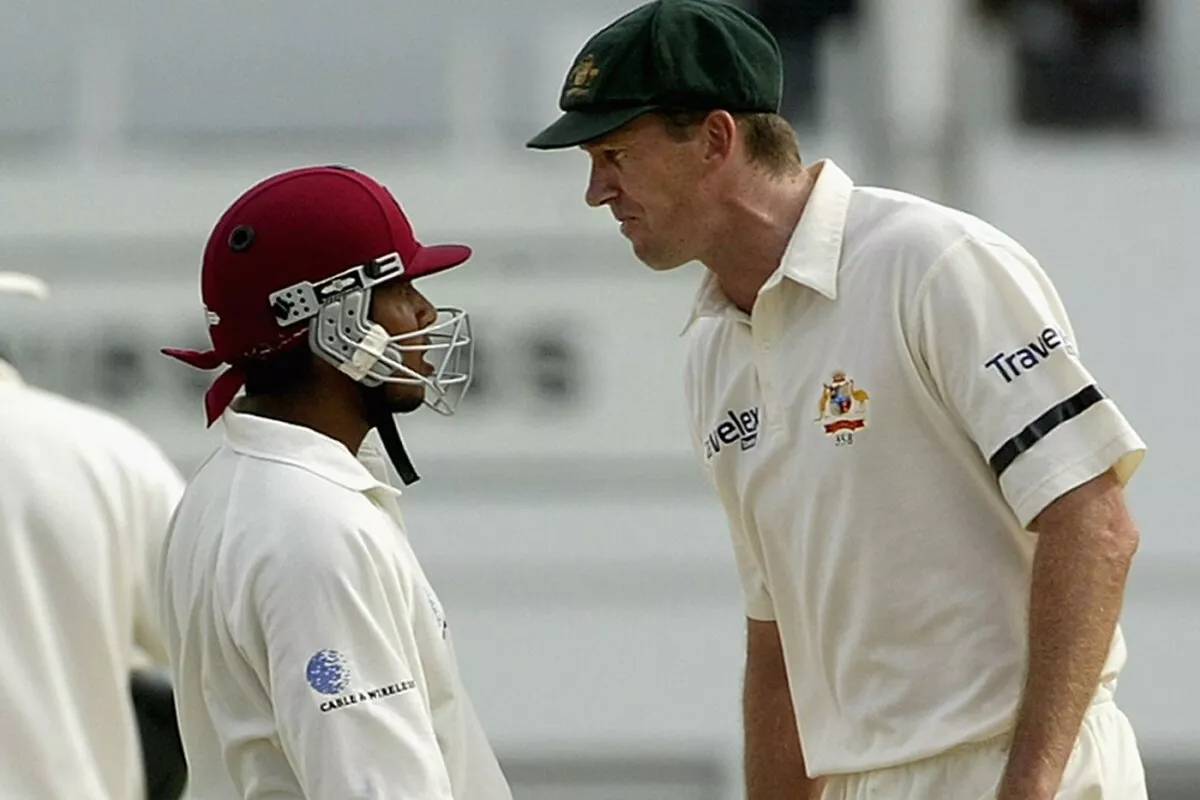Introduction
Welcome to a thrilling journey through the world of cricket sledging, where words and wit can be as powerful as the finest cover drive or the deadliest yorker. Cricket, often celebrated as a gentleman’s game, has its fair share of heated moments, verbal duels, and memorable exchanges on the field. In this blog post, we’ll explore the best
What is Cricket Sledging?

Cricket sledging, often referred to simply as “sledging,” is a unique aspect of the sport where players engage in verbal banter, taunts, and witty remarks directed at their opponents. This practice has become an integral part of the game’s culture and is used strategically to unsettle, distract, or mentally pressure the opposition. Sledging is known for its ability to add an extra layer of psychological warfare to the already intense battle on the
Key Characteristics of Cricket Sledging:
- Verbal Exchange: Sledging primarily involves spoken words exchanged between players during a match. These remarks can range from humorous taunts to aggressive and provocative comments.
- Psychological Strategy: Sledging is employed as a psychological tactic to disrupt the concentration and focus of the batsmen or bowlers. By unsettling the opposition, players aim to gain a competitive advantage.
- Tradition and Culture: Over the years, sledging has become deeply ingrained in cricket culture. It is often seen as a way to test a player’s mental resilience and sportsmanship.
Cricket sledging is not limited to any specific format of the game and can be witnessed in Test matches, One-Day Internationals (ODIs), and Twenty20 (T20) games alike. While some sledging incidents are lighthearted and intended purely for entertainment, others have sparked controversies and led to disciplinary actions.
| Player | Opponent | Remarks |
|---|---|---|
| Ricky Ponting | Graeme Smith | During a Test match, Ponting famously said to Smith, “This isn’t a f*ing tea party, mate!” |
| Andrew Flintoff | Tino Best | Flintoff once quipped to Best, “Mind the windows, Tino,” after the West Indian smashed a delivery for six. |
| Mark Waugh | Adam Parore | Waugh humorously remarked, “I remember you were sh*t in ’92, mate,” as Parore came to the crease. |
While sledging is a common practice in cricket, it has also sparked debates on sportsmanship and ethical boundaries. As we delve deeper into the world of
Why is Sledging Controversial?
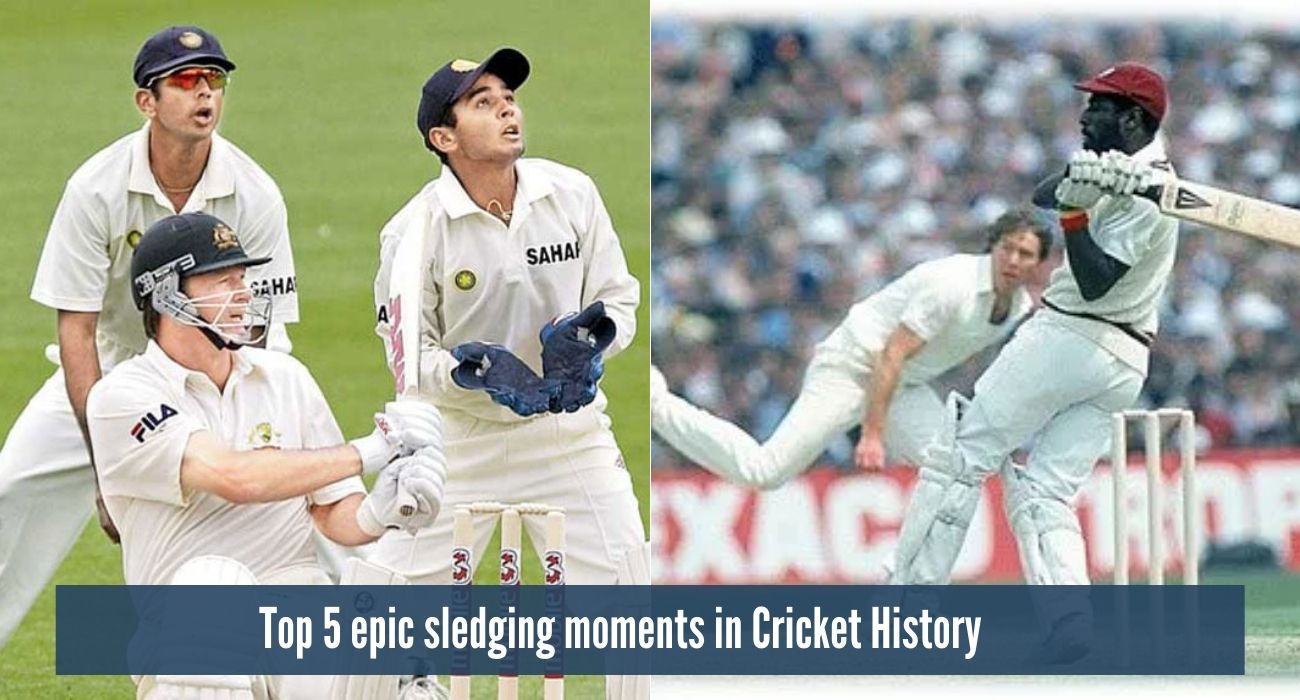
Sledging in cricket, despite being a longstanding tradition, has often been the subject of controversy and debate. The following points shed light on why sledging is a contentious aspect of the sport:
- Ethical Concerns: Sledging raises ethical questions about the line between gamesmanship and unsportsmanlike conduct. Some argue that personal or offensive remarks cross the boundaries of fair play.
- Impact on Mental Health: Sledging can have a significant impact on players’ mental health and well-being. Continuous taunting and verbal abuse can lead to stress, anxiety, and even depression.
- Distraction and Focus: While sledging is intended to disrupt the concentration of the opposition, it can also backfire. Players who engage in excessive sledging may find their own focus compromised.
- Role Model Behavior: Cricketers are often seen as role models for aspiring young players. Sledging incidents involving prominent players can set a negative example for the next generation.
The controversies surrounding sledging have led to several instances of on-field altercations and off-field disciplinary actions. Cricket‘s governing bodies, such as the International
One notable incident that stirred controversy was the “Monkeygate” scandal during the 2007-08 Border-Gavaskar Trophy series between India and Australia. Harbhajan Singh of the Indian team was accused of racially abusing Andrew Symonds. The incident resulted in hearings, fines, and strained relations between the two teams.
| Positive Effects | Negative Effects |
|---|---|
|
|
It’s important to note that while sledging remains a part of the game, the cricketing community continually strives to strike a balance between spirited competition and maintaining the integrity of cricket as a sport. As we explore further, we’ll uncover iconic sledging moments and their impact on the cricketing world.
Historical Sledging Incidents
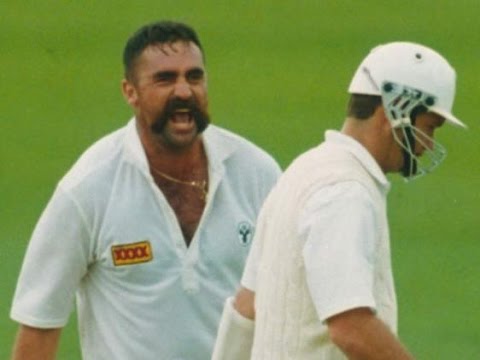
Throughout the rich history of cricket, there have been several memorable sledging incidents that have left a lasting impact on the sport. These incidents often showcase the wit, humor, and intensity of players on the field. Here are a few historical sledging moments that have become legendary:
- Greg Chappell and Dennis Lillee vs. Javed Miandad (1981): During a Test match between Australia and Pakistan, Javed Miandad imitated Dennis Lillee’s bowling action. In response, Lillee kicked Miandad, leading to a heated exchange of words and gestures.
- Merv Hughes and Vivian Richards (1991): Merv Hughes, known for his cheeky sledging, taunted the legendary Vivian Richards, saying, “If you turn the bat over, you’ll find the instructions on the other side.” Richards replied with a boundary on the very next ball.
- Shane Warne and Daryll Cullinan (1997-98): The Warne-Cullinan rivalry is well-documented. Warne famously remarked to Cullinan, “I’ve been waiting two years for another chance to humiliate you.” Cullinan replied with a series of boundaries.
These historical sledging incidents are etched in cricketing folklore, showcasing the competitive spirit and the occasional humor that players bring to the game. While some exchanges resulted in on-field tensions, others provided entertainment value for cricket fans around the world.
| Incident | Impact |
|---|---|
| Chappell-Lillee vs. Miandad | Highlighted the intensity of matches between Australia and Pakistan and drew attention to the rivalry. |
| Hughes vs. Richards | Showcased the humorous side of sledging and added to the lore of cricket anecdotes. |
| Warne vs. Cullinan | Built anticipation for confrontations between Warne and Cullinan in subsequent matches. |
These historical incidents demonstrate that sledging is often used strategically to gain a mental edge over opponents or to break the ice in intense situations. While some players excel at it, others use it sparingly, knowing that the balance between gamesmanship and respect for the game is delicate.
In the next sections, we’ll explore iconic sledging moments from various eras of cricket and understand how sledging has evolved over time.
Iconic Sledging Moments
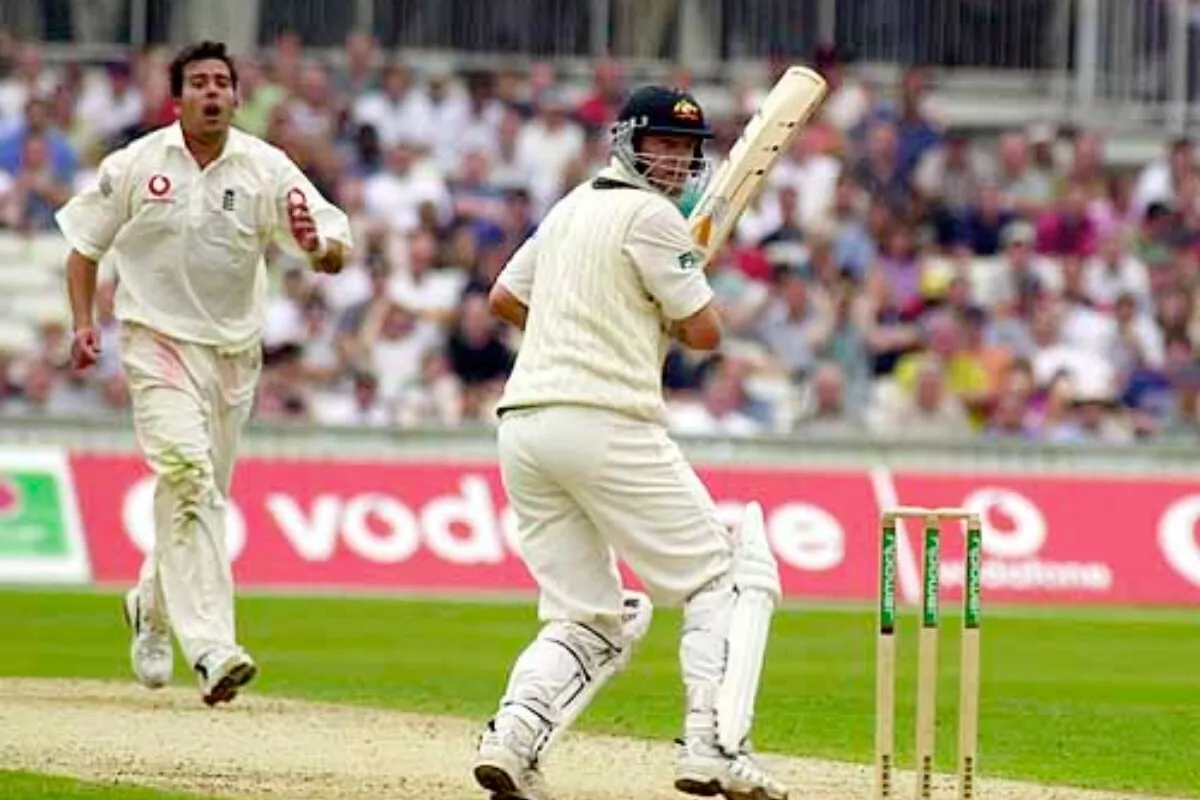
Cricket history is filled with iconic sledging moments that have both amused and astonished fans around the world. These exchanges of words and wit have become an integral part of the sport’s folklore. Here are some of the most memorable sledging moments:
- Shane Warne and Paul Collingwood (2006): During an Ashes series, Shane Warne playfully asked Paul Collingwood, “Why are you chirping, you’re not good enough to get a game?” Collingwood responded with a defiant century.
- Rahul Dravid and Shoaib Akhtar (2004): Shoaib Akhtar, one of the fastest bowlers in cricket history, famously said to Rahul Dravid, “Inshallah, I will make you fly.” Dravid’s composed response was, “You don’t worry, I’ll make sure you don’t fly home.”
- Michael Clarke and James Anderson (2013-14 Ashes): Michael Clarke’s on-mic comment, “Get ready for a broken arm,” to James Anderson ignited a heated series. It epitomized the fierce rivalry between Australia and England.
These moments of sledging not only added entertainment value to the game but also showcased the mental resilience and sense of humor of the players involved. It’s important to note that sledging often serves as a way for players to relieve tension and build camaraderie on the field.
| Moment | Impact |
|---|---|
| Warne vs. Collingwood | Highlighted the competitive spirit of the Ashes and showed that sledging can motivate players to perform at their best. |
| Dravid vs. Akhtar | Revealed the mental toughness of Rahul Dravid and added a touch of humor to the India-Pakistan rivalry. |
| Clarke vs. Anderson | Intensified the Ashes rivalry and demonstrated the psychological aspect of cricket. |
These iconic moments serve as a testament to the unique character of cricket, where verbal battles are as cherished as the physical contests on the pitch. While sledging has its critics, it undeniably contributes to the drama and spectacle that make cricket a globally adored sport.
In the following sections, we’ll delve into the modern-day landscape of sledging in cricket and explore the notable sledgers who have left their mark on the game.
Sledging in Modern Cricket
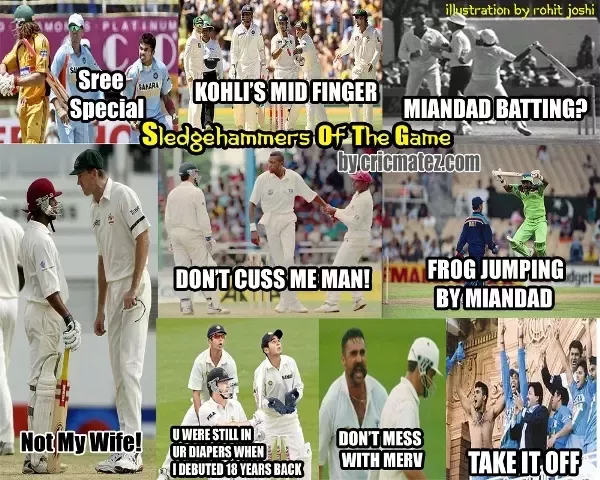
Sledging remains a prevalent and intriguing aspect of contemporary cricket, with players continuing to engage in verbal duels to gain an edge in matches. Modern cricket has witnessed the evolution of sledging tactics, often blending humor, psychology, and tactical strategies. Here’s a closer look at sledging in today’s game:
- Tactical Mind Games: Modern cricketers have refined the art of sledging into a tactical tool. Captains and players often use it strategically to exploit the weaknesses of opponents. For instance, fielders may comment on a batsman’s susceptibility to a particular type of delivery, attempting to plant doubts in their mind.
- Mic’d Up Players: The introduction of on-field microphones has brought the audience closer to the action, capturing live sledging exchanges. This has added an element of entertainment to the game, with fans enjoying the banter between players.
- Maintaining Boundaries: In the modern era, there is a greater emphasis on maintaining the boundaries of acceptable sledging. Personal attacks or racial slurs are strictly prohibited and can result in disciplinary actions by cricketing authorities.
The Indian Premier League (IPL) is a prime example of how modern cricket has embraced sledging as part of the spectacle. IPL matches often feature international stars who engage in friendly banter, making the league not only a cricketing extravaganza but also a source of entertainment for fans worldwide.
| Aspect | Impact |
|---|---|
| Tactical Strategies | Enhances teams’ tactical approaches by using sledging to disrupt opponents’ game plans. |
| Entertainment Value | Brings an element of entertainment to cricket matches, engaging fans with the live banter between players. |
| Ethical Standards | Enforces stricter ethical standards, discouraging personal attacks and offensive language. |
Despite the evolution of sledging, it remains a fine line for players to tread. While it can be a tool for motivation and intimidation, it must be employed responsibly to maintain the spirit of the game. Cricketers today understand the importance of striking a balance between competitive banter and sportsmanship.
In the upcoming sections, we’ll explore some of the notable sledgers in cricket history and examine the impact of sledging on players’ mental resilience.
Notable Sledgers in Cricket
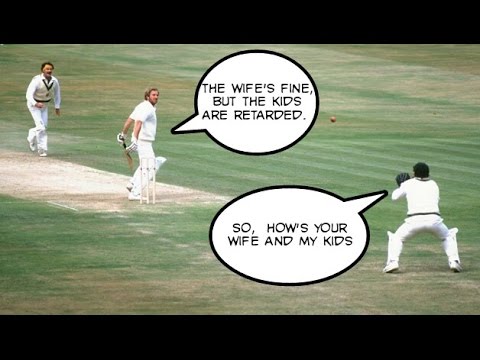
Cricket has seen its fair share of players renowned for their sledging prowess. These individuals not only made significant contributions to their teams but also left an indelible mark with their verbal antics on the field. Here are some of the most notable sledgers in cricket history:
- Andrew Symonds: The Australian all-rounder was known for his relentless and creative sledging. His on-field banter often targeted opponents’ weaknesses and played a role in unsettling them.
- Mark Waugh: One of Australia’s finest batsmen, Mark Waugh, was equally famous for his sharp wit. His clever remarks and sense of humor made him a memorable sledger.
- Harbhajan Singh: The Indian spinner was not one to shy away from a verbal duel. His exchanges with opponents, especially during the intense India-Pakistan matches, added an extra layer of drama to the contests.
- James Anderson: The England fast bowler is known for his ability to get under the skin of opposition batsmen. Anderson combines skill with well-timed comments to disrupt the concentration of his opponents.
These players brought a unique dimension to the game with their sledging skills, often pushing the boundaries of acceptable banter. It’s important to note that while their sledging was memorable, they were also exceptional cricketers who contributed significantly to their respective teams.
| Player | Impact |
|---|---|
| Andrew Symonds | Added intensity and mental pressure to matches with his relentless sledging. |
| Mark Waugh | Combined cricketing skill with a sharp wit, making him a memorable figure on the field. |
| Harbhajan Singh | Infused drama and tension into India-Pakistan encounters with his spirited exchanges. |
| James Anderson | Used sledging as a psychological tool to disrupt batsmen’s focus and concentration. |
While these players are celebrated for their sledging abilities, it’s important to recognize that sledging is a double-edged sword. It can motivate and intimidate, but it can also lead to confrontations and controversies. Cricket continues to evolve, and the role of sledging remains a subject of discussion among fans, players, and cricketing authorities.
In the following section, we’ll explore the impact of sledging on players’ mental resilience and how it can shape the outcome of matches.
Impact of Sledging on Players
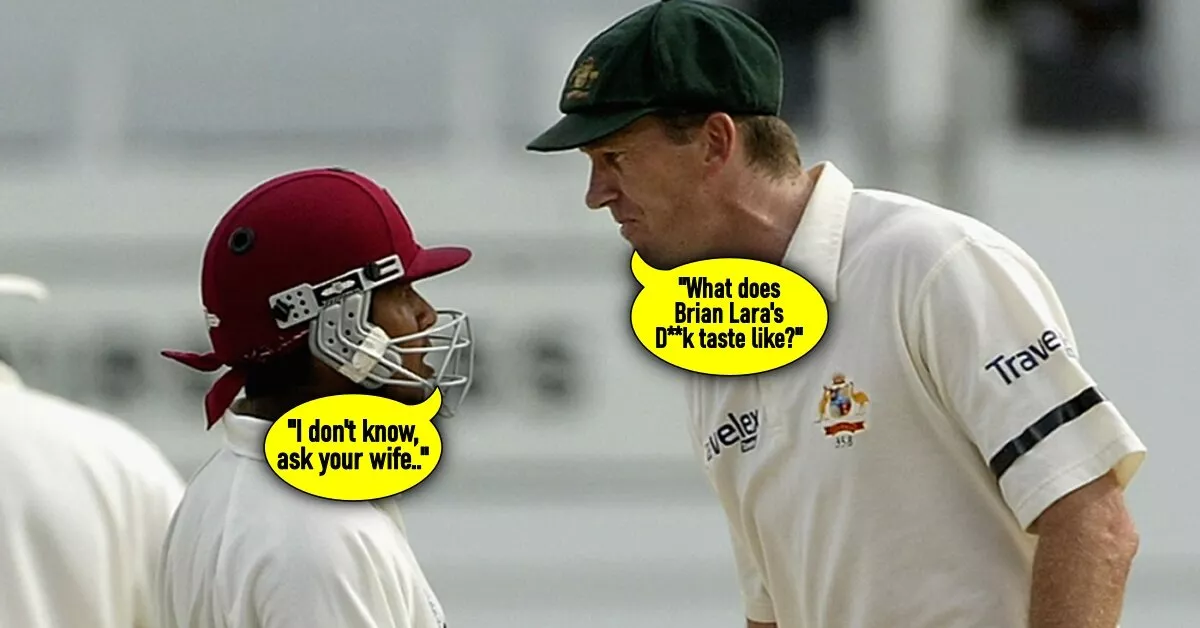
Sledging is not just about clever banter; it can have a profound impact on the mental and emotional well-being of cricket players. The effects of sledging can shape the course of a match and influence players’ performances in various ways. Let’s delve into how sledging impacts cricketers:
- Mental Resilience: Sledging tests a player’s mental resilience and ability to stay focused under pressure. Those who can maintain their composure often perform better, while others may crumble.
- Motivation: Sledging can serve as motivation for some players. It fires them up and drives them to prove their opponents wrong. They use the sledging as fuel to perform at their best.
- Distractions: On the flip side, sledging can be a distraction. Players who get emotionally involved in verbal battles may lose concentration and fail to perform up to their potential.
- Team Dynamics: Sledging can affect team dynamics. Players who engage in verbal duels may create tension within their own team or with opponents, impacting communication and morale.
Notable Example: The 2005 Ashes series between England and Australia is a classic illustration of the impact of sledging. The England team, led by Andrew Flintoff, used sledging as a psychological weapon to unsettle the dominant Australian side. The strategy worked, and England won the series, regaining the Ashes after 18 years.
| Impact | Examples |
|---|---|
| Mental Resilience | Players like Steve Waugh and Rahul Dravid were known for their unshakable focus, even in the face of intense sledging. |
| Motivation | Andrew Symonds often used sledging as motivation to perform at his best, turning negative comments into positive energy. |
| Distractions | Instances where sledging led to distractions include players losing their cool and getting dismissed under pressure. |
| Team Dynamics | In the past, heated exchanges between teammates like Shane Warne and Steve Waugh affected team unity. |
Cricket is a sport where mental toughness is as critical as physical skill. Sledging is one of the tools that can shape the mental state of players and influence the outcome of matches. The ability to handle sledging, either by ignoring it or using it constructively, is a valuable skill for cricketers at all levels.
In the final section, we’ll address some frequently asked questions (FAQs) about sledging in cricket and offer a concluding perspective on this intriguing aspect of the game.
FAQs
Q1: What is cricket sledging?
Cricket sledging, also known as mental disintegration or gamesmanship, refers to the practice of using verbal taunts and comments to disturb and distract the opposing players during a cricket match. It is a tactic employed by players to gain a psychological advantage over their opponents.
Q2: Are there any rules governing sledging in cricket?
Yes, there are unwritten rules and guidelines regarding sledging in cricket. While a certain level of banter is accepted, personal attacks, racial slurs, or any form of abusive language are strictly prohibited. Players are expected to maintain a level of respect and sportsmanship.
Q3: Can sledging affect a player’s performance?
Definitely. Sledging can have a significant impact on a player’s mental state, affecting their concentration and confidence. If a player is disturbed by constant sledging, it can lead to poor performance on the field, influencing the outcome of the match.
Q4: What are some famous sledging incidents in cricket?
- One of the classic sledging moments occurred during the Ashes series when Shane Warne, the legendary Australian spinner, famously remarked to English batsman Daryll Cullinan, “I’ve been waiting two years for another chance to humiliate you.”
- During an India-Pakistan match, Indian wicketkeeper Kiran More’s constant appealing irritated Pakistani batsman Javed Miandad. In response, Miandad imitated More’s appealing style, creating a memorable moment in cricket sledging history.
Q5: How do players respond to sledging?
Players respond to sledging in various ways. Some choose to ignore it and focus on their game, while others counter sledges with witty comebacks. A good example is the Australian cricketer David Warner, known for his quick wit, who often responds to sledging with humor, defusing tense situations on the field.
Q6: Does sledging only happen on the field?
Sledging primarily occurs on the field during matches, but it can also extend to off-field interactions, especially in the media and social platforms. Players sometimes continue their verbal battles in press conferences or on social media, adding another layer of drama to the game.
Q7: Is sledging a part of cricket strategy?
Yes, sledging is considered a strategic tool in cricket. Teams use it to break the concentration of key players, create discord within the opposing team, and shift the momentum of the game in their favor. However, it should be done within the boundaries of sportsmanship.
Conclusion
Cricket sledging has undoubtedly become an inseparable part of the game, adding a unique flavor to the matches. As we explored the best cricket sledging moments of all time, it’s evident that these instances have left an indelible mark on the sport’s history. The witty banter, sharp retorts, and occasional heated exchanges between players on the field have not only entertained millions but have also become memorable chapters in the story of cricket.
Looking back at these classic sledging instances, it’s clear that sledging is an art form, requiring a perfect blend of wit, timing, and psychological acumen. Players like Sir Vivian Richards, Shane Warne, and Andrew Flintoff mastered this art, leaving spectators in awe of their verbal dexterity. These moments, often captured on camera, have become viral sensations, shared and celebrated by cricket enthusiasts worldwide.
However, it’s crucial to acknowledge that while sledging adds entertainment value to the game, there’s a fine line between friendly banter and disrespectful behavior. Cricketers, regardless of their competitive spirit, must uphold the spirit of sportsmanship and mutual respect. Crossing the line and resorting to personal attacks not only tarnishes the game’s image but also harms the players involved.
In this era of social media and instant viral content, sledging moments can quickly escalate and create unnecessary controversies. Players, coaches, and cricketing authorities have a shared responsibility to ensure that sledging remains within the boundaries of healthy competition. Umpires and match referees play a vital role in maintaining decorum on the field, penalizing players who overstep the limits.
As fans, we can relish the clever wordplay and spirited exchanges while also appreciating the skills and talent that players bring to the game. Cricket sledging, when done right, adds an extra layer of excitement to the sport, making every match more engaging and memorable.
Let’s continue to celebrate the game of cricket, its rich history, and the colorful characters who have graced the field with their presence. As we enjoy the best sledging moments, let’s also remember the importance of respecting one another, both on and off the pitch, ensuring that cricket remains a gentleman’s game, cherished by generations to come.
